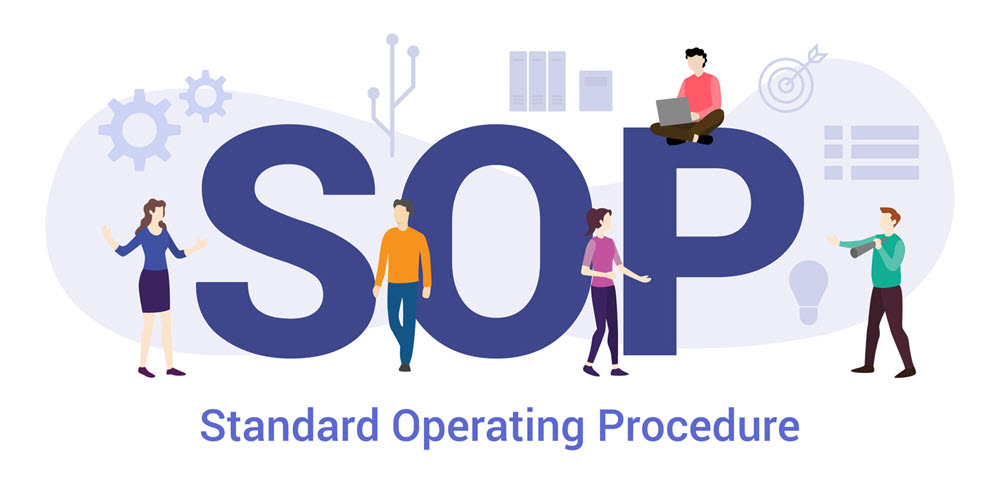Standard Operating Procedures (SOPs) are vital documents in various industries, providing clear and detailed instructions for performing tasks and processes. Using standard operating procedure examples can greatly assist in the creation and implementation of effective SOPs. In this article, we will explore the importance of SOPs, the benefits of using examples and how to effectively use them to improve your business processes.
Understanding the Importance of Standard Operating Procedures
Standard Operating Procedures are documents that outline step-by-step instructions for carrying out specific tasks or processes within an organisation. They are essential for various reasons such as, but not limited to the following.
- Consistency: SOPs ensure that tasks are performed consistently, reducing the risk of errors and variations in output.
- Training: They serve as valuable training materials for new employees, helping them understand the correct procedures and expectations.
- Compliance: SOPs are often necessary to comply with industry regulations, quality standards, and safety requirements.
- Quality Control: They are a tool for quality control, ensuring that products or services meet predefined standards.
- Efficiency: SOPs streamline operations by providing clear and efficient guidelines, saving time and resources.
To create effective SOPs, many organisations find it helpful to use standard operating procedure examples as a foundation.
The Benefits of Using Standard Operating Procedure Examples
Utilising standard operating procedure examples offers several advantages for businesses. Let’s explore these benefits in more detail.
- Guidance and Structure: Examples provide a clear framework to follow, making it easier to create comprehensive SOPs. They serve as a roadmap for what should be included in your procedures.
- Time and Resource Savings: Using existing examples as templates can significantly reduce the time and effort required to develop new SOPs. This is particularly beneficial for small businesses or those with limited resources.
- Best Practices: Examples often embody best practices in a specific industry or field. By using them, you can adopt proven methods and ensure your procedures align with industry standards.
- Consistency: Standardising your SOPs based on examples promotes consistency in your organisation’s operations. This consistency is crucial for maintaining quality and achieving compliance.
- Learning Opportunity: Examples can be valuable educational tools for individuals and teams to understand how to document processes effectively. They can serve as training materials for employees involved in creating or following SOPs.
Now that we understand the benefits of using standard operating procedure examples, let’s discuss how to effectively use them in your organisation.
How to Effectively Use Standard Operating Procedure Examples
Identify Your Needs
Before you begin, identify the specific processes or tasks that require SOPs. Clearly define the scope and purpose of each procedure. This initial step helps ensure that you select the most relevant standard operating procedure examples to use as a starting point.
Source Reliable Examples
Once you’ve identified your needs, seek out reliable standard operating procedure examples. These can be found within your industry, from regulatory bodies, or through professional associations. Ensure that the examples you choose align with your specific requirements and industry standards.
Analyse and Customise
Examine the selected standard operating procedure examples in detail. Understand their structure, the level of detail provided, and the language used. Customise the examples to suit your organisation’s unique needs and preferences. Ensure that the procedures are clear, concise, and easy to follow.
Involve Stakeholders
Incorporate input from relevant stakeholders, including employees who will be responsible for following the SOPs. Their feedback can help refine and improve the procedures, making them more practical and effective in real-world scenarios.
Document and Review
Document the customised SOPs and maintain them in a central location accessible to all relevant personnel. Periodically review and update the procedures to reflect changes in processes, technology, or industry regulations.
Training and Implementation
Provide training to employees on how to use and follow the SOPs effectively. Ensure that everyone understands the importance of adhering to the documented procedures for consistency and quality control.
Monitor and Evaluate
Continuously monitor the implementation of SOPs and gather feedback from employees. Evaluate the effectiveness of the procedures in achieving their intended outcomes and make adjustments as necessary.
Conclusion
In conclusion, standard operating procedure examples are valuable resources for creating effective SOPs in your organisation. By understanding the importance of SOPs, recognising the benefits of using examples, and following the steps for effective utilisation, you can improve the consistency, quality, and efficiency of your business processes. Remember that SOPs are not static documents but living tools that should be regularly reviewed and updated to meet the changing needs of your organisation.






